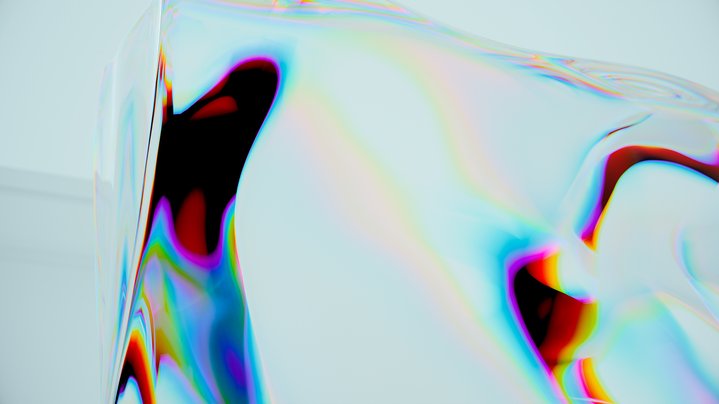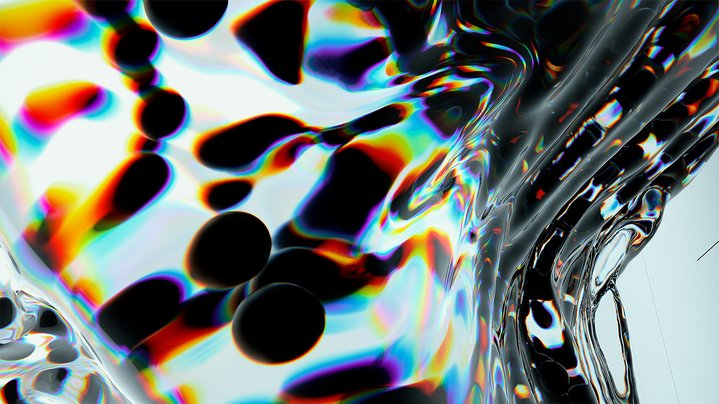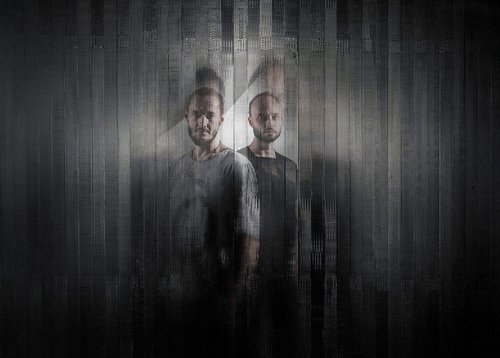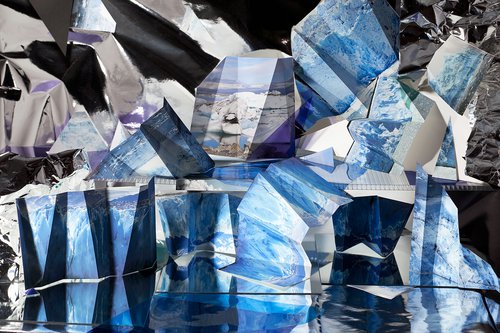Maxim Zhestkov: Hymns on the periphery of AI
Bright young star Maxim Zhestkov’s digital video NFT ‘Points of View’ recently sold at Christie’s in a benefit auction called ‘Cartography of the Mind’, propelling him into the international spotlight. This August a site-specific work is being unveiled at W1curates bringing his work right into London’s Oxford Street.
Born in Ulyanovsk in 1985 where he studied architecture and graphic design, artist Maxim Zhestkov has opened a studio practice in London where he creates his short digital video works, called art films. He first came to the attention of the international art world this Spring for the sale of his video ‘Points of View’ at Christie’s in a benefit auction called ‘Cartography of the Mind’. His new work ‘Waves’, to be shown at W1curates, is his first large scale site-specific piece, offering viewers an immersive digital experience. Central to his artistic work are reflections around artificial intelligence. His digital works are self-referential, hymns on the periphery of AI; Zhestkov writes about how he builds a dialogue with the digital artwork he is creating, using algorithms which he likens to neural pathways in the brain. He calls the screen a membrane, a final frontier between that old tussle between man and machine. For the Christie’s sale initiative, which raised money for MAPS an organisation supporting research into the use of psychedelic drugs, there was an obvious symbiosis.
Today we are in the foothills of the AI revolution, and humans in all fields of art and science are grasping at ways to connect with this technologically advanced new ‘Other’. Scientists and business leaders tell us that artificial intelligence will come to dominate our lives. There are robots now programmed not only to read human emotion but to react upon it; a canine robot was recently created which within one hour had taught itself to walk and in the field of culture, robotic artists who create original digital works based on their own aesthetic choices.
The artworld has long prodded at the frontiers of digital technologies, as far back as the late 1960s British artist Harold Cohen used computer-controlled robots to create paintings. But the blockchain and NFT digital art has now manifested a borderless cultural scene in which young artists are experimenting and playing with digital art from San Fran to Beijing creating a new stable of recognisable styles, from grungy digital memes, to sophisticated generative art which courts ideas around artificial intelligence. The blockchain’s decentralisation itself seems to promise organic human social growth from within rather than imposed from above; a dynamic which seems in tune with algorithmic creation. Its aesthetics and ideas are appealing to younger contemporary audiences as well as new collectors and there is enough of all of this going on to feel like a movement.
In digital art algorithms are the building blocks, an artist like a programmer writes them to create visual effects using a trial-and-error process to create the finished work. And digital artists working with generative art are in some way like collaborators, manipulating their digital material, which half answers back in unexpected ways, inspiring the artist to make more and unanticipated changes.
Zhestkov is clearly fascinated by form and movement and his strong visual aesthetic has many stylistic roots. One of his trademarks is the use of tiny black ‘particles’ to construct digital abstract organisms which move and mutate, as if they are governed by laws of biology in nature. It is as if these forms have their own life force although this is an illusion. In his series of short digital videos called ‘Artificial Organisms’ the dynamic, organic sculptural forms he has created share movements seen in nature: here you recognise waves, there you imagine a cobra rising, its hood on display; here are bright colours smouldering under black matter, as though volcanic material.
Yet, his digital videos are often meditative, therapeutic and calming, as the organic or geometric forms he has created ebb and flow. The artist moves assertively between different scales, from a close-up he cuts to a wide perspective where the organic form seems more like a monumental sculpture in a three-dimensional digital museum space. There are references to modernism in his work, of course the avant-garde was perhaps one of the greatest conversations between new technology and art. Steam trains and electrical gadgets may have seemed rather noisy, aesthetically unappealing and downright filthy, yet the futurists held onto them as the holy grail, painting them into their canvasses and writing poems about them.
I have a confession: I like art which is made by human hands and can be touched, but I also like art which reflects the best of our collective human striving. Time will tell which artists survive to tell the tale of the great technological achievements of our day. Although Zhestkov is not an artist who brings big answers to the great challenges and dilemmas of our times, he seems to be an active participant in trying to use digital technology to ponder upon AI and its relationship to humans, and our interaction. As in the work ‘Layers’, which he calls a ‘digital etude’ he writes about how it cuts ‘through facets of existence … searching for meanings.’ Art that has open ended questions often has the potential to harvest something of real value in the future.
W1curates, London














